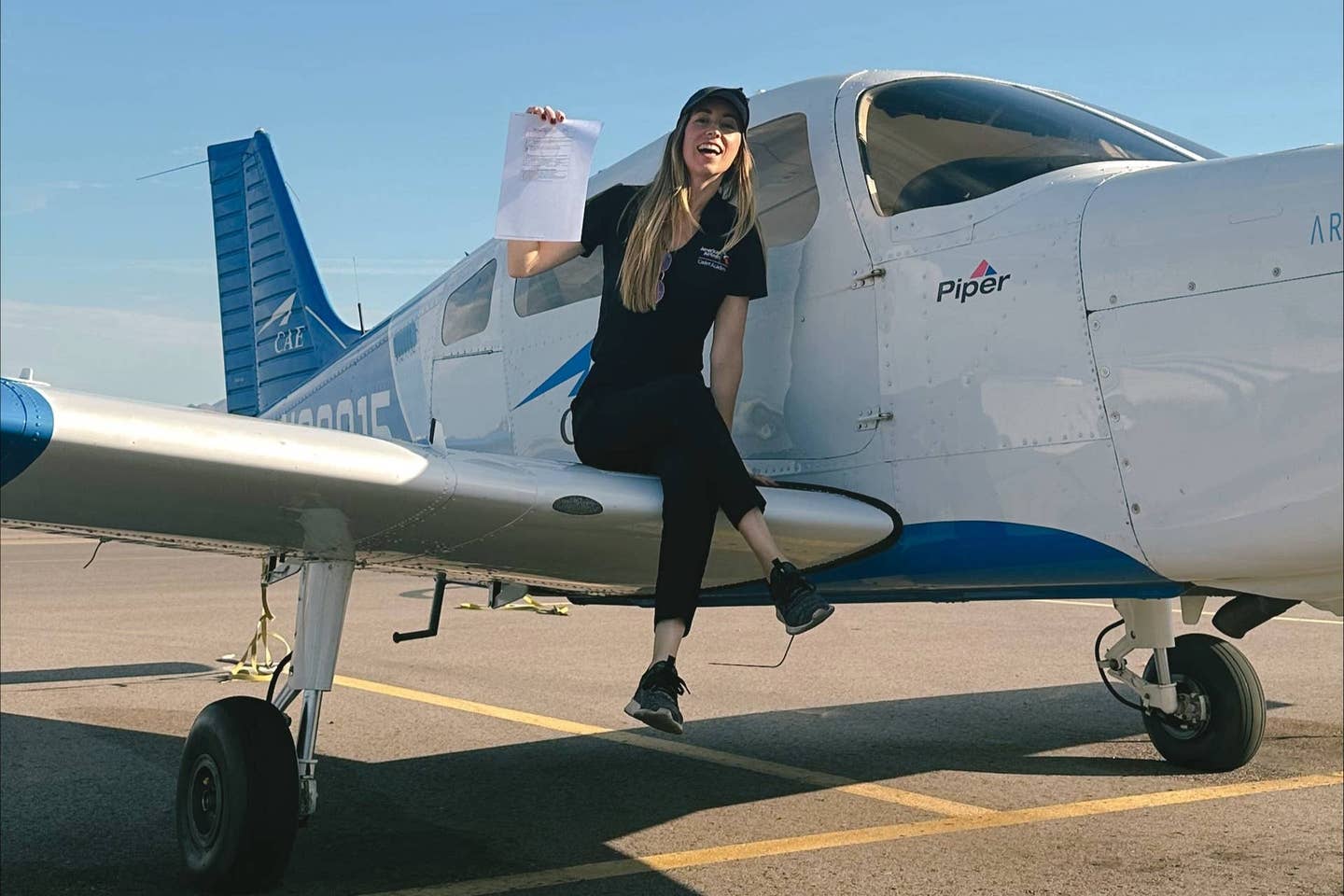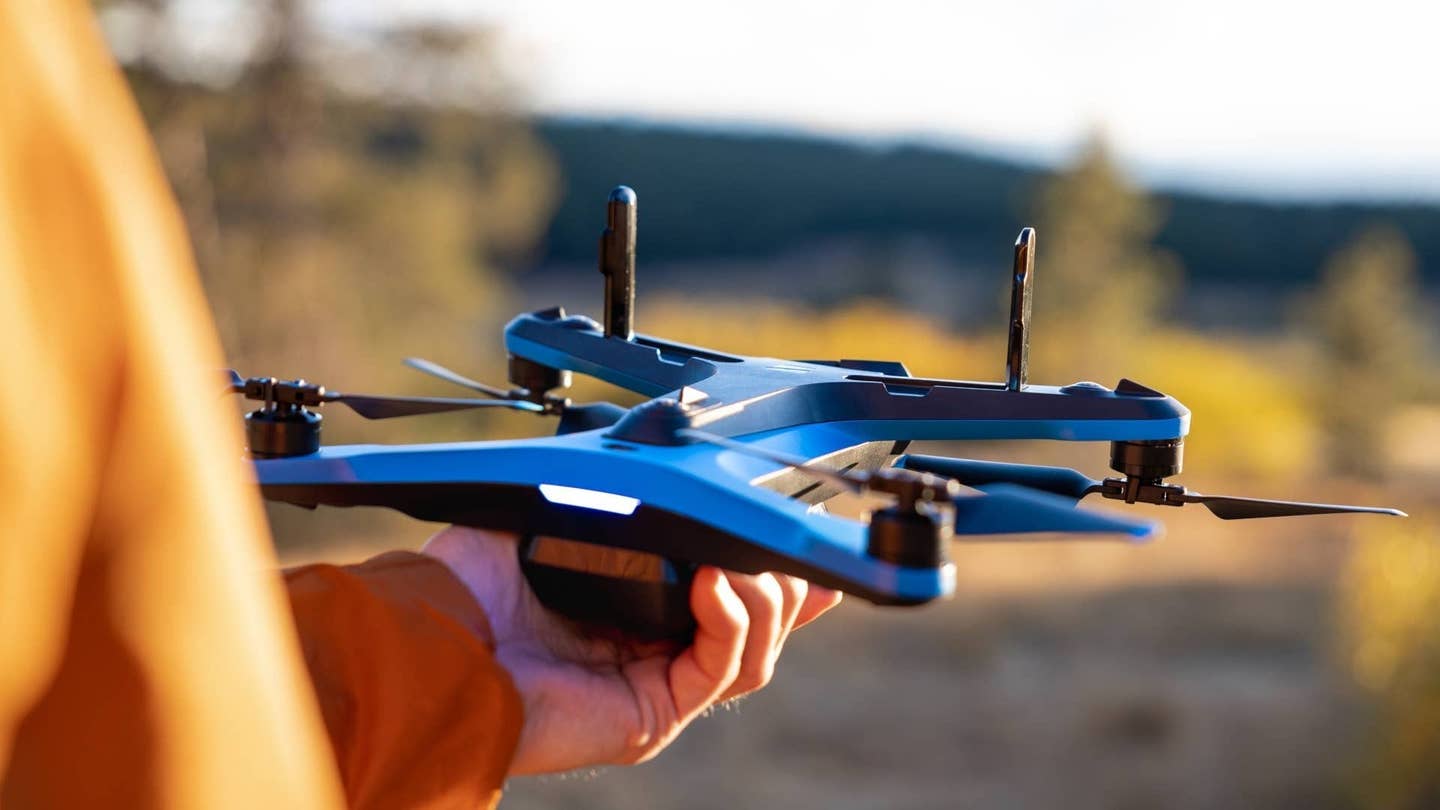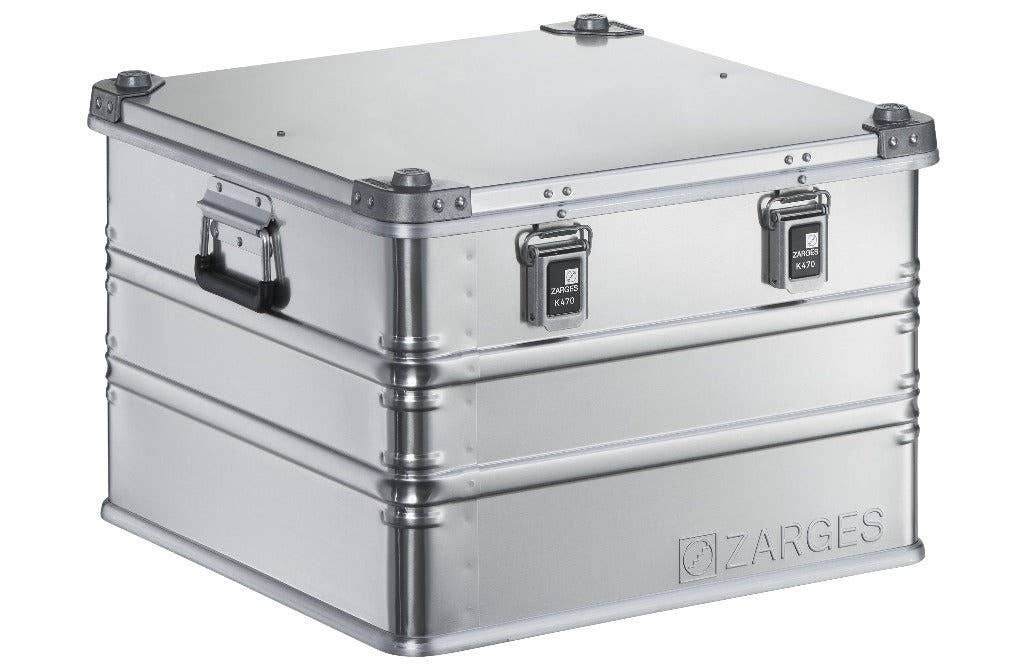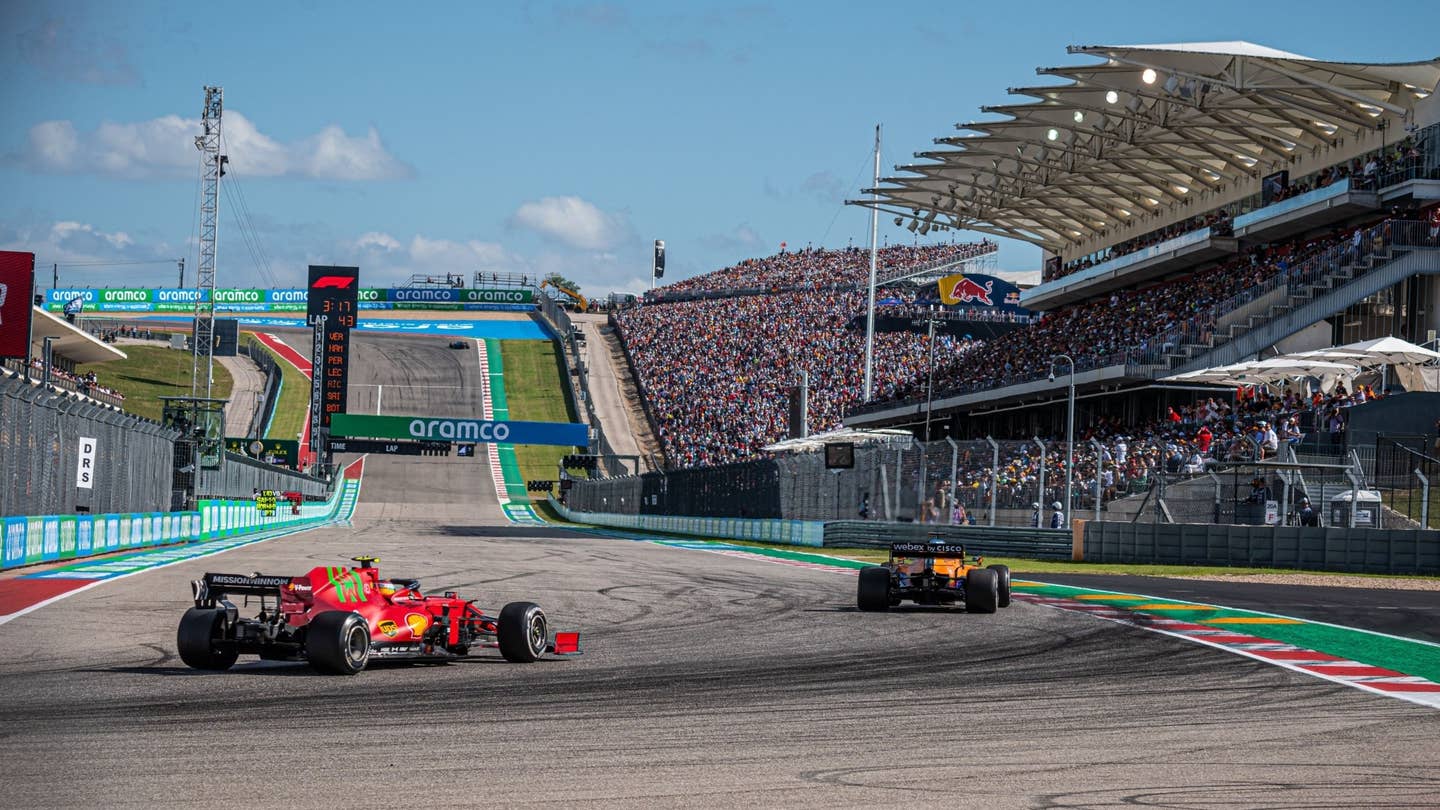How Much Is an Airplane Rental?
So, you want to rent an airplane? Let’s explore the most economical ways to fit your budgeting needs.

An OZ1 rental Cirrus SR22 is seen in front of The Fieldhouse at Bentonville Municipal Airport, aka “Thaden Field.” [Courtesy: Thaden Field]
Aircraft ownership can be an expensive investment. From initial costs to ongoing expenses (such as maintenance, fuel, storage, insurance, etc.), it can quickly drain your bank account if not budgeted for correctly. Therefore, renting can be a more economical option for many pilots, especially those who enjoy flying more as a hobby than a career.
Whether you’re looking for a way to keep your flying skills sharp or an opportunity to take a family member up on their first private flying adventure, let’s explore the different types of rental options and find the one that best fits your budgeting needs.
Types of Plane Rentals
Renting is a great way to take advantage of your pilot’s license without the financial burden of owning an aircraft. From hourly rentals to more long-term options, let’s explore how the rental process works and the different rental plans available to you.
Hourly Rentals
When renting an airplane on an hourly basis, the rental rate is calculated based on the number of hours the airplane is in operation (such as flight time, Hobbs time, checkout/in time, etc.) Hourly rates vary based on the aircraft type, engine capacity, and other operating factors determined by the rental company.
The pros of hourly rentals include paying only for the hours you fly, flexibility to try different aircraft, and no ownership responsibilities. The cons include higher hourly costs, the need to proactively plan due to availability constraints, and the need for additional insurance coverage.
Daily/Weekly Rentals
When renting an airplane on a daily/weekly basis, the rental rate is based on the number of days/weeks the airplane is in the possession of the renter. Once again, daily/weekly rates vary based on aircraft type and other factors determined by the rental company, and the pros and cons are like those of hourly rentals.
Flying Clubs/Rental Programs
Joining a flying club/rental program allows pilots access to shared aircraft. These flying clubs can be affordable due to shared costs among club members, while still giving the members a sense of ownership. They also create a sense of community among pilots and often offer a wide range of aircraft to choose from.
Caveats to flying clubs include regular membership fees and the need for scheduling coordination with other members, which can be tricky during peak times/seasons. Also, shared responsibility for the aircraft can be challenging when important decisions must be made (such as upgrades, maintenance, club activities, etc.)
Wet vs. Dry Rentals
A wet rental is an agreement with fuel costs included, while a dry rental is an agreement that makes the pilot responsible for the cost of fuel in addition to the rental fees.
The biggest pro of a wet rental is that it allows the pilot to know up front what the final cost will be and show up to the aircraft with peace of mind and a full tank of gas. The biggest pro of a dry rental is that it allows the pilot to find cheaper fuel options elsewhere and teaches them fuel management skills.
Factors Affecting Airplane Rental Costs
Every rental company has a unique pricing structure, and its costs vary from aircraft to aircraft, region to region, etc. Several factors influence the way rental fees are determined, including:
- Aircraft type: Smaller, single-engine aircraft are cheaper to operate than larger, more complex multiengine planes and jets that have higher rental fees.
- Aircraft age and condition: Older aircraft without upgrades cost significantly less to rent than newer aircraft with all the high-end accessories installed.
- Location/airport fees: Regions with higher costs of living tend to have higher aircraft rental rates, as compared to locations with lower living costs. Airport fees (such as landing fees, hangar/tie-down fees, etc.) tend to be lower at smaller, regional airports, as compared to larger, international airports.
- Insurance costs: Most owners’ insurance policies do not cover aircraft renters. Therefore, it’s the responsibility of the renter to have their own insurance policy that will protect them, their passengers, and the equipment in case of an incident or accident.
- Fuel costs/efficiency: When choosing a dry rental option, the pilot is responsible for the fuel costs, while a wet rental option has the fuel costs included in the rental fees. The fuel efficiency of the aircraft is also an important factor to consider, because even though more modern aircraft may cost more to rent up front, they may be more fuel efficient in the long run, resulting in better cost options.
- Instructor fees: When renting an aircraft from a flight school for the purpose of flight training, additional instructor rates will apply. These rates may vary based on instructors’ qualifications and experience.
- Club/membership fees: Joining a flying club or rental program requires club dues to gain access to club-owned or leased aircraft.
Average Rental Rate Ranges
Rental costs are heavily dependent on a multitude of factors (such as aircraft type, aircraft age and condition, etc.). Therefore, when it comes to determining rental rates, a cost calculator is often used to determine a more precise hourly rate. Because rates vary even within an aircraft type (old versus new Cessna 172s), the following average rental rates are provided:
- Single-engine piston aircraft: $120-$200 per hour
- Multi-engine piston aircraft: $200-$500 per hour
- Turboprop aircraft: $1,000-$3,000 per hour
- Very light/light jets: $1,600-$3,600 per hour
Cost Comparison to Ownership
Although we’re discussing the benefits of renting an aircraft, sometimes it may be more cost-effective to take the leap into aircraft ownership. Let’s explore what it would cost, on average, to rent versus own a single- or multiengine piston aircraft.
Estimated Annual Costs of Renting vs. Owning
Hourly rates vary based on the airplane size and engine capacity, and for a single- or multiengine piston aircraft hourly rates can range anywhere between $120 and $500 per hour. On average, recreational pilots fly about 50 hours per year, spending anywhere between $6,000 and $25,000 in rental fees.
Now, when you start to fly more than the average 50 hours per year, this may be the time to consider aircraft ownership. When purchasing an aircraft, there are initial and ongoing costs that must be considered and budgeted for. Depending on the aircraft year, model, and engine(s), a blanket price of approximately $50,000 can be expected.
On top of it, ongoing monthly payments, hangar/tie-down fees, insurance, fuel, and maintenance/repairs can put your annual spending well over $20,000. If your budget allows it, buying an airplane may be worth serious consideration.
When we start to look at private jet costs, the numbers increase significantly both from the rental and ownership perspectives. However, just like with smaller single- and multiengine piston aircraft, the decision comes down to your budget and frequency/method of use. Therefore, if you are in the market for a private jet, make sure to explore the pros, cons, and luxury of private jet travel.
When Does Ownership Make More Sense Financially?
If you’re consistently renting the most expensive airplane options, purchasing a plane may be worth the cost. Also, as a guide, if you fly more than 50 hours a year, it’s more economical to buy a plane than rent one. After also taking initial and ongoing costs into consideration, you can quickly determine whether aircraft ownership is in your future.
Tips for Finding Affordable Rentals
There are several affordable options to consider when renting an aircraft. Each option has its pros and cons, but chances are you will be able to find at least one in your area that fits your needs.
- Join a local flying club: A flying club is ideal for someone looking to rent an airplane on a regular basis. In addition to a monthly club fee, you’re only required to pay for the hours you use the aircraft, which is often much lower per hour than when renting from flight schools or fixed base operators (FBOs).
- Rent from a flight school: Flight schools are a great option for someone wanting to rent an aircraft on a short-term basis. Although the rental fees are higher than those at a flying club, flight schools often have a robust inventory of aircraft as they provide training to a variety of new and already certified pilots.
- Look for older but well-maintained aircraft: Older aircraft with great maintenance history can cost a lot less to rent than newer aircraft with all the high-end accessories installed, making it another great short-term rental option.
- Consider renting from less busy airports: Smaller, less busy airports tend to have lower airport fees, which in turn translates into lower rental fees for pilots looking to rent from the local flight schools, FBOs, or flying clubs.
Is an Airplane Rental Right for You?
We have discussed several factors and options to consider in finding the best rental option for your budget and needs. Now what? It’s your turn to do the research in your area to find the right flight school, FBO, private renter, or flying club to meet your flying goals.
FAQ
What does a Cessna 172 rent for?
$120 to $200 per hour, depending on the year it was manufactured and which equipment (such as autopilot and modern avionics) has been installed.
Is it better to rent or buy a plane?
It depends on your budget and how often you fly. Generally, if you fly more than 50 hours a year and can afford the initial and ongoing costs of owning an aircraft, it’s better to purchase. On the other hand, if you fly less than 50 hours a year, it’s more economical to rent.
Is it affordable to fly private?
Yes, private jet travel is more accessible than ever under certain circumstances. To keep costs down, consider taking scheduled private jet flights, joining membership programs, and flying on smaller aircraft and into smaller airports.

Sign-up for newsletters & special offers!
Get the latest FLYING stories & special offers delivered directly to your inbox






